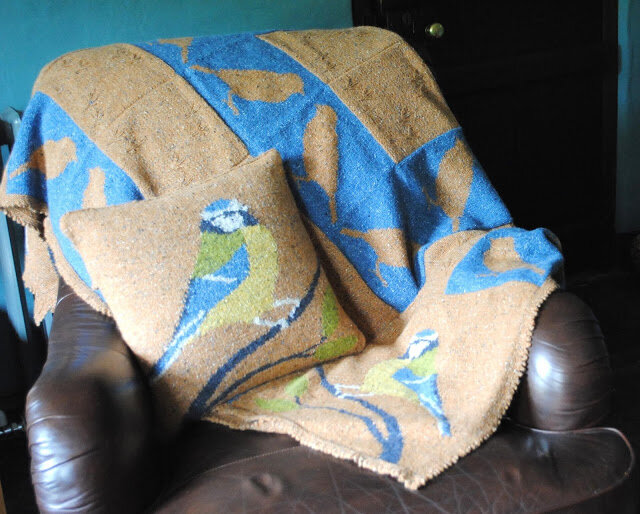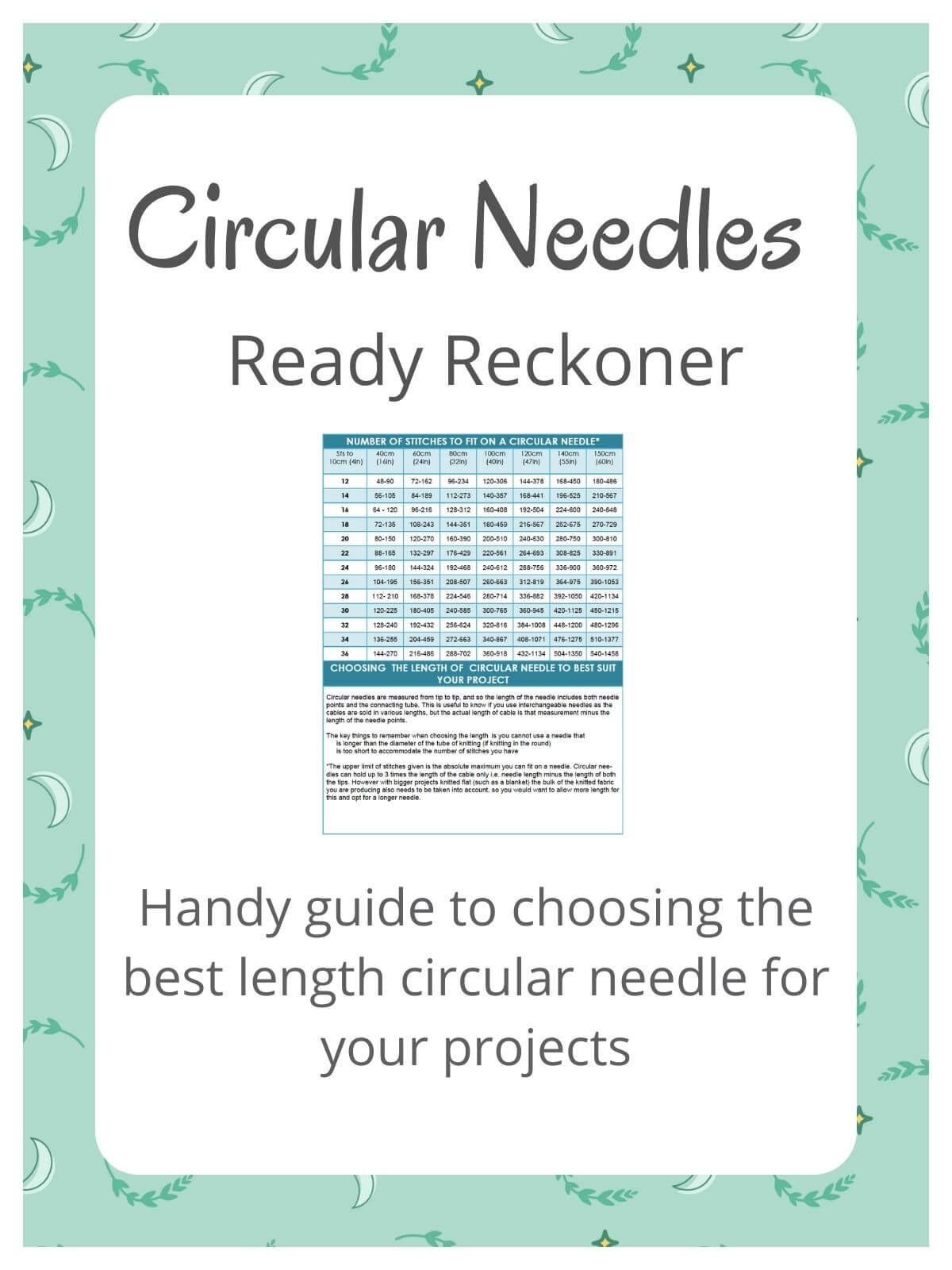Circular needles - what length should you use?
Watch the video or scroll below to to read the blog (or both!) - the choice is yours.
Often patterns will indicate the size and length of circular needles to use, but where this isn't the case or you are planning your own design, it can be a bit of a guessing game - and who wants to waste time working this out by trial and error? This post demystifies circular needles, how these are measured and what is the best length to use for your project.
Want to get straight to it without having to do the maths? Click here to get my free ready reckoner!
About circular needles
For those new to using circular knitting needles is is useful to understand a few things before you start:
They are not actually circular - but are basically made of a pair of short needle points which are joined together with a flexible tube (cable) of plastic or nylon to form a single, bendy, double pointed needle.
You can use them for knitting in the round, but they are are also great for knitting flat, especially for projects with a very large number of stitches that would be impossible to fit onto straight needles. By the way - I've a top tip for casting on a large number of stitches.
In fact there are several benefits to using circular needles for all your projects, which I wrote about on this previous post and I rarely use straight needles these days.
How is the length measured?
Circular needles are measured from tip to tip, and so the length of the needle includes both needle points and the connecting tube. This is useful to know if you use interchangeable needles as the cables are sold in various lengths, but the actual length of cable is that measurement minus the length of the needle points.
What lengths do circular needles come in?
Circular needles range enormously and can be as short as 22cm (8½in) or as long as 150cm (60in), however the most commonly used lengths are 40, 60 or 80cm (16, 24, or 32in).
Which length circular needles do I need?
The key things to remember when choosing the length is you cannot use a needle that is longer than the circumference of the tube of knitting (if knitting in the round), and/or one that is too short to accommodate the number of stitches you have. If you are knitting flat the length is less critical - you only need worry about it being long enough to hold all the knitting.
As a rough guide the following applies:
22 or 30cm (8½ or 12in) are best for small tubes such as socks, mittens or cuffs. It is worth considering however, that very short circular needles will also have shorter than usual needle points which you may not find comfortable to knit with depending on the size of your hands. Where this is the case it may be better to use a set of double pointed needles, or other techniques such as using 2 circular needles or magic loop (which are not covered here but may be in future posts....).
40cm (16in) are useful for sleeves, hats and bodies of children's jumpers.
60 or 80cm (24 or 32in) work well for the bodies of sweaters for adults.
100, 120, 140 or 150cm (40, 47, 55 or 60in) are usually used for knitting large projects in the flat, such as the knitted edge a blanket.
If you want to work this out more accurately though, you can calculate the minimum or maximum length of circular needle required using the following equations.
Longest circular needles to use
To calculate the maximum length of needle you can use for knitting in the round, divide the number of stitches you will be knitting by the stitch tension (gauge) per cm (or inch) to find the diameter of the knitting, and then use a needle length of that dimension or smaller.
For example, if your project has 110 stitches and is knitted to a tension (gauge) of 22 stitches to 10cm (4 in), then first divide 22 by 10 (or 4 if using inches) to calculate the number of stitches per cm or inch, then divide your 110 stitches by that number. In this example that will be:
110 divided by 2.2 (or 5.5 for inches) = 50cm (20in)
So the longest needle you could use would be 40cm (16in).
Shortest circular needles to use
Having too many stitches is usually less of concern when knitting in the round unless you're knitting very large projects. Circular needles hold up to 3 times the length of the cable only i.e. needle length minus the length of both the tips. For big knits such as a blanket the bulk of the knitted fabric you're making is a factor, so need to allow more length for this. Also, when knitting flat you'll want to have enough length to be able to store your work in progress without risk of losing stitches off the ends of the needle. Needle tips are usually 10-12.5cm (4-5in) long each, so if you deduct 25cm (10in) from the needle length that will be a safe bet.
To work out what is the shortest needle you need, first divide the number of stitches by the stitch tension (gauge) per cm or inch to get the length of your knitting as before, then divide that by 3 and then add 25cm (10in), and use a needle length of that dimension or larger.
For example if your project has 352sts and is knitted to a tension (gauge) of 22 sts to 10cm (4 in), then first divide 22 by 10 (or 4 if using inches) to calculate the number of stitches per cm or inch, then divide your 352 sts by that number. In this example that will be:
352 divided by 2.2 (or 5.5 for inches) = 160cm (64in)
then
160cm (64in) divided by 3, plus 25cm (10in) = 78.3cm (31¼in)
So the shortest needle you could possibly use would be 80cm (32in), but if this were the edging for one side of a large blanket you would really want to go up a few sizes to accommodate all that bulk of the blanket to at least 120cm (47inch) or even 150cm (60in) for a comfortable knit with less risk of losing stitches off the needles when you have finished a row.
Free download available
Not loving maths? No worries - this will help. To make life a little easier I have done the maths for you and compiled this easy to use 'reckoner' PDF listing the minimum and maximum number of stitches for a range of needle lengths.
You may also like
This post was originally published in Aug 2015 and has been updated



